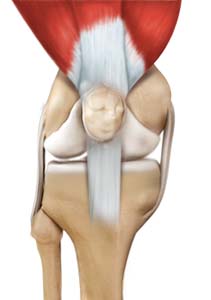
What is Knee Ligament Reconstruction?
Knee ligament reconstruction is a surgical procedure to repair or replace damaged ligaments of the knee joint. The surgery can be performed using minimally invasive techniques.
Indications for Knee ligament Reconstruction
Knee ligament reconstruction is usually indicated in cases of high-energy knee injuries where a knee ligament is torn or avulsed such as:
- Motor vehicle accidents
- A direct blow to the knee
- Falling on the knee from a height
- High-impact sports injuries
Symptoms of Knee ligament Injuries
Patients with knee ligament injuries may experience:
- Pain
- Swelling
- Limited range of motion
- Injuries to nerves and arteries of the leg
- Knee instability
Diagnosis of Knee Ligament Injuries
To accurately detect the location and extent of the tear, the following diagnostic procedures may be performed:
- Comprehensive clinical evaluation of the knee
- Imaging studies such as X-rays and MRI scans
- Arthroscopic examination
Procedure for Knee Ligament Reconstruction
- The procedure is usually performed under general anesthesia.
- Arthroscopic instruments are inserted through tiny keyhole incisions made over the knee to reattach the ligament to the bone using special sutures.
- The ligament may also be reconstructed using a graft taken from the patient (autograft) or donor tissue (allograft).
- Your surgeon will create a tunnel in the thighbone and shinbone through which the graft is inserted to replace the torn ligament.
- After the graft is placed, fixation devices are used to secure the grafts and hold the ligaments in place while healing occurs.
Post-operative Care Following Knee Ligament Reconstruction
Following the surgery, you will be given pain medication to keep you comfortable.
Physical therapy will be recommended for the restoration of normal knee motion and muscle strength after surgery. You will be required to use crutches and a knee brace for 6 to 8 weeks with minimal or no weight-bearing during this time.
Risks and Complications of Knee Ligament Reconstruction
As with any surgery, there are risks and complications that may occur following knee ligament reconstruction. These can include:
- Complications of the anesthesia
- Bleeding
- Infection
- Vascular or nerve injury
- DVT Deep Vein Thrombosis (blood clot)
- Failure of the reconstruction
Related Topics
- Knee Arthroscopy
- ACL Reconstruction
- ACL Reconstruction with Quadriceps Tendon
- Cartilage Transplantation
- Meniscal Surgery
- PCL Reconstruction
- LCL Reconstruction
- MCL Reconstruction
- Meniscus Replacement
- Knee Cartilage Restoration
- Knee Ligament Reconstruction
- Meniscal Transplantation
- Meniscus Root Repair
- Quadriceps Tendon Repair
- Knee Osteotomy
- Meniscectomy
- Mosaicplasty
- Revision Knee Ligament Reconstruction
- Posterolateral Corner (PLC) Reconstruction
- Compartment Decompression
- Lysis of Adhesions with Manipulation Under Anesthesia (MUA)
- Partial Arthroscopic Meniscectomy
- Patellofemoral Stabilization
- Combined Hyaluronic Therapy for the Knee
- Primary ACL Repair
- Quadriceps Tendon Autograft for Anterior Cruciate Ligament Reconstruction
- Cartilage Restoration of the Patellofemoral Joint
- Patellofemoral Realignment
- Tibial Tubercle Transfer
- Matrix Induced Autologous Chondrocyte Implantation (MACI)
- Arthroscopic Debridement
- LPFL Reconstruction
- Failed Anterior Cruciate Ligament (ACL) Reconstruction
- Posterolateral Corner Reconstruction
- Prior Meniscectomy
- Chondroplasty
- Physeal Sparing Reconstruction of the Anterior Cruciate Ligament
- Bone-Patellar Tendon-Bone (BPTB) Allograft
- Bone-Patellar Tendon-Bone (BPTB) Autograft
- Proximal Tibial Osteotomy
- Hamstring Autograft
- Hamstring Allograft
- High Tibial Osteotomy
- Multiligament Reconstruction of the Knee
- Patellar Tendon Repair
- Medial Patellofemoral Ligament Reconstruction
- Distal Realignment Procedures
- Arthroscopic Reconstruction of the Knee for Ligament Injuries
- Cartilage Replacement
- Autologous Chondrocyte Implantation
- Subchondroplasty
- Partial Meniscectomy
- Cartilage Microfracture
- Knee Trauma Reconstruction
- Physeal Sparing Surgery (Anderson's Technique)
- Physeal Sparing Surgery (Micheli-KocherTechnique)
- Pharmacological Interventions for Knee Injuries
- Viscosupplementation
- Physical Therapy for Knee
- Intraarticular Knee Injection
- Non-Surgical Knee Treatments
- Physical Examination of the Knee
- Pre-op and Post-op Knee Guidelines
- Am I a Candidate for Knee Surgery?




